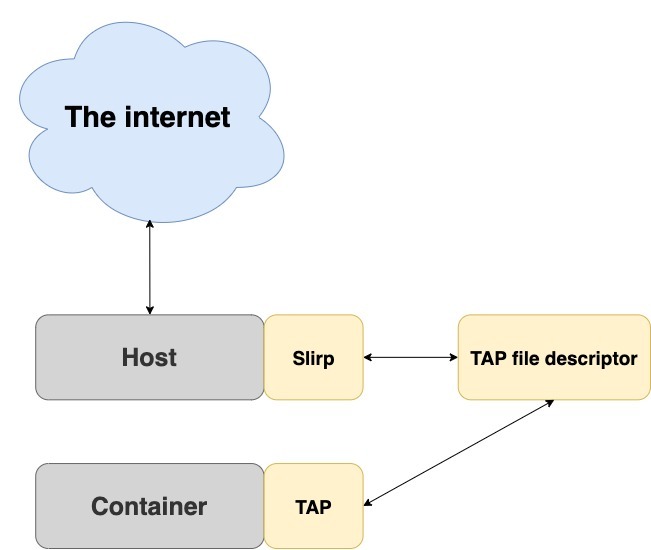Executive Summary
As cloud computing evolves, containers continue to become more and more popular. New solutions and ideas to the way we implement containers are being introduced. One of these new ideas is rootless containers.
Rootless containers is a new concept of containers that don’t require root privileges in order to formulate. Many solutions have been proposed to overcome the technological challenges of creating a container with an unprivileged user, some of them are still under development and some are production-ready. While rootless containers present some advantages, mainly from a security perspective, they are still in their early stages.
In this post, Unit 42 researcher Aviv Sasson reviews the internals of rootless containers. Aviv also presents a vulnerability he found in one of the major rootless networking components called Slirp. Palo Alto Networks customers running Prisma Cloud are protected from this vulnerability with the host and container vulnerability scanner, which alerts on software components running with this vulnerability.
Background
As the name implies, rootless containers are the same as conventional containers but differentiate in the fact that they don’t need root privileges in order to be formed.
Nowadays, rootless containers are still in early adoption stages, but are already supported by the major players in the field.
There are several reasons why rootless containers have emerged.
-
- Adding a new security layer. In case the container engine, runtime or orchestrator is compromised, the attacker won't gain root privileges on the host.
- Allowing multiple unprivileged users to run containers on the same machine (e.g. HPC).
- Allowing isolation inside nested containers.
This solution was made possible by a new development in the Linux kernel that allows unprivileged users to create new user namespaces. When a user creates and enters a new user namespace, he becomes root in the context of that namespace and gains most of the privileges required to spawn a functioning container.
I won’t dig into user namespace technicalities, but namespace root isn’t as privileged as real root in areas that affect the entire system (for example, a namespace root cannot load or delete kernel modules). This led to some challenges that were solved differently by each container engine.
Networking
In order to allow proper networking inside a container, usually, a Virtual Ethernet device (VETH) is created and in charge of the networking. This poses a problem for rootless containers, as only real root has the privileges to create such devices. A number of solutions were proposed to solve the problem -- the main ones being Slirp and LXC-user-nic.
Slirp
Slirp was originally designed to be an internet dial-up for unprivileged users. In time, it found a new purpose as a networking stack for virtual machines and emulators, including the well-known QEMU (aka Quick Emulator). After some modifications, it was adjusted to enable networking in rootless containers. It works by forking into the container’s user and network namespaces and creating a tap device that becomes the default route. It then passes the device’s file descriptor to the parent who runs in the default network namespace, which is now able to communicate both with the container and the internet.

LXC-User-Nic
Another way to set up networking is by running a setuid binary that creates a VETH device. Although it does enable networking inside the container, it misses the point of rootless containers because it requires the container binary to run with root privileges.
Storage
One of the complex elements in implementing containers is storage management. By default, container engines use a special driver called Overlay2 (or Overlay) to create a layered filesystem that is efficient in both space and performance. This cannot be done with rootless containers, as most Linux distributions don’t allow mounting overlay filesystems in user namespaces (Ubuntu is an exception). This problem drove rootless containers to work with other drivers and filesystems.
The obvious solution was to use another driver, like the VFS storage driver. While it works, it is significantly less efficient. The better solution was to create a new storage driver to suit the needs of rootless containers. One such driver is the FUSE-OverlayFS. It’s a user-space implementation of Overlay, which is more efficient then VFS and can run inside user namespaces.
Cgroups
The Linux control group (cgroups) feature, another key element of implementing containers, allows processes and containers to be organized into hierarchical groups whose usage of various types of resources can then be limited and monitored. Since the kernel’s cgroups interface is provided through a pseudo-filesystem that usually resides in “/sys” (a root owned directory), a non-root user cannot access and utilize it.
To tackle this problem, two approaches were proposed:
Cgroups V2
A new kernel implementation of cgroups that supports delegating permissions to unprivileged users. The downside is that V2 doesn’t support all the controllers that were implemented for cgroups V1 (e.g. devices, net_cls, net_prio,etc.).
PAM module
Another solution to the problem, by LXC, is to install pam_cgfs.so, which is a Pluggable Authentication Module (PAM module) that will allow unprivileged users to authenticate and manage cgroups.
Adoption status
The following container engines support rootless containers with the following components:
| Docker | Podman | LXC | |
| Networking | - Slirp
- Lxc-user-nic - VPNkit
|
Slirp | Lxc-user-nic |
| Storage | VFS | FUSE-OverlayFS | VFS |
| Cgroups | No support | Limited support for cgroups v2 | PAM module |
Table 1. Adoption status
As seen in the table above, the most prominent container engines are working to support the various aspects of rootless containers, spearheaded by Podman and LXC.
Security
From a security perspective, there is a big benefit in using rootless containers. The premise in the security world is that every software can be compromised - whether by vulnerabilities or by misconfigurations - and that includes container implementations. We should always run any software with as limited privileges as possible, so when a security bug is exploited the impact would be minimized.
While rootless containers should be considered more secure, they utilize new features and components that haven’t yet been widely tested and reviewed. These components may inadvertently become another attack vector. One example is the networking solution of rootless containers. LXE-user-nic, or Slirp, could be vulnerable to security issues that would affect both the container and host.
LXE-user-nic has had multiple vulnerabilities that allowed privilege escalation, such as CVE-2017-5985 and CVE-2018-6556. Another example is Slirp. In recent years, several vulnerabilities were disclosed, including a heap overflow that can lead to code execution on the host. In order to avoid a total takeover, Slirp’s maintainers have added to their software a sandbox functionality and seccomp support, but the truth is that container engines run Slirp without the seccomp support as it’s still experimental and therefore it may be possible to escape the sandbox.
Slirp - CVE-2020-1983
As part of my research, I conducted my own research on Slirp in order to detect and fix possible vulnerabilities. While fuzzing the software, I identified a use-after-free vulnerability that can crash Slirp. The vulnerability was assigned CVE-2020-1983.
The issue has to do with how Slirp manages IP fragmentation. The maximum size of an IP packet is 65,535 bytes and when fragmenting IP fragments, this is supposed to be the limit. The bug here was that Slirp doesn’t verify the size of the fragmented IP packet and when it tries to fragment a packet that is bigger than 65,535, it crashes.
When Slirp stops, the container loses its network stack and effectively becomes unusable.
Other vulnerabilities in libslirp could lead to code execution on the container and not just crashing. It could even lead to an eventual breakout from the container to the host and to other containers. In 2020, two of such vulnerabilities were found: CVE-2020-8608 and CVE-2020-7039.
I would like to thank the Slirp development team for acknowledging my security advisory and quickly issuing a fix patch. The affected Slirp versions are 4.0.0 to 4.2.0.
Prisma Cloud Protection
Palo Alto Networks customers running Prisma Cloud are protected from this through the Prisma Cloud Compute host and container vulnerability scanner which alerts on vulnerable software components with this vulnerability.

Conclusion
Rootless containers present a new approach for containers that adds a major security layer. It could easily become the next trend in containers in the cloud. While there are still many limitations and some parts of their functionality are still experimental and are under development, I do think that with time and effort rootless containers could be fully functional and adopted by the community while taking the place of traditional containers.












 Get updates from Unit 42
Get updates from Unit 42